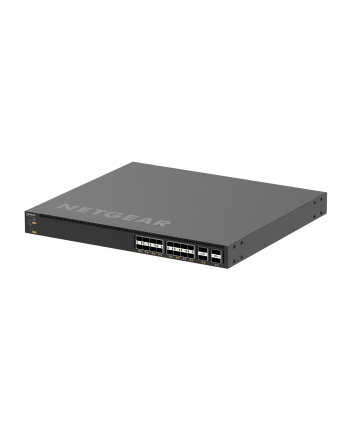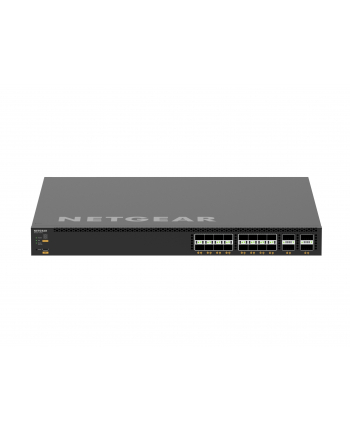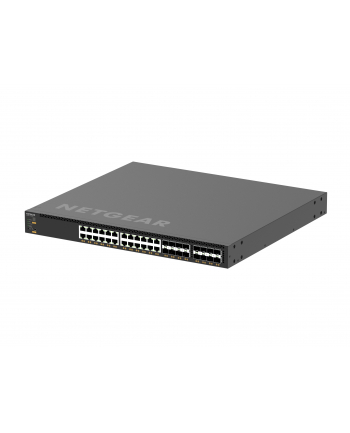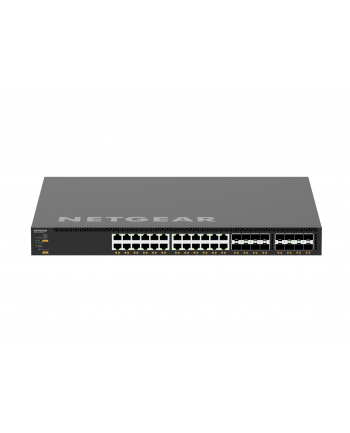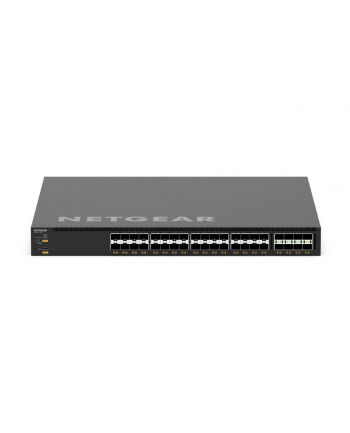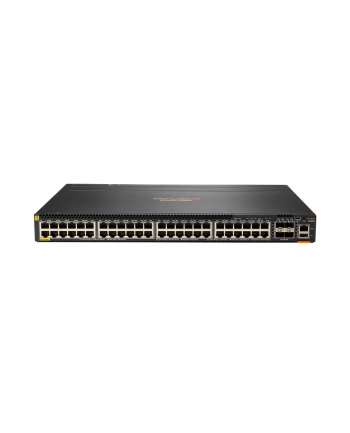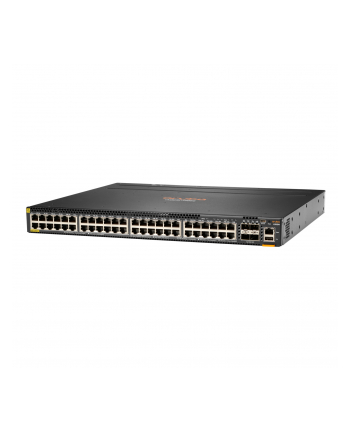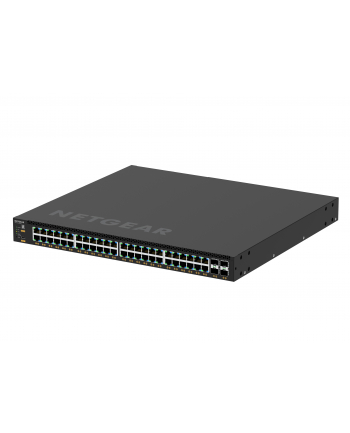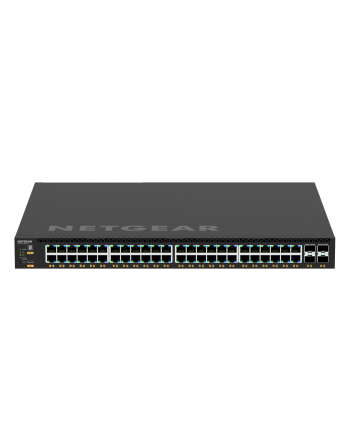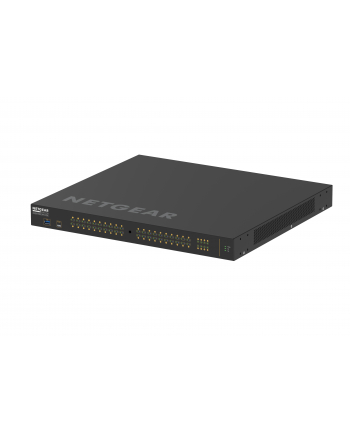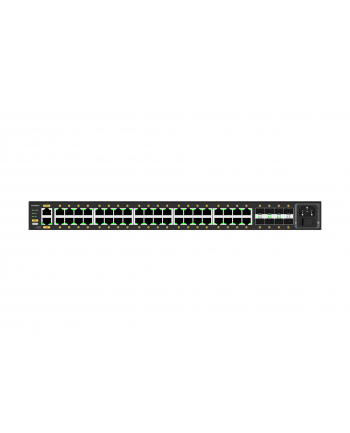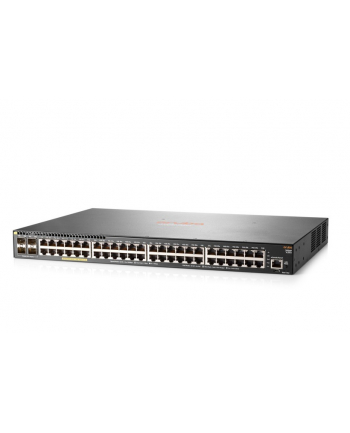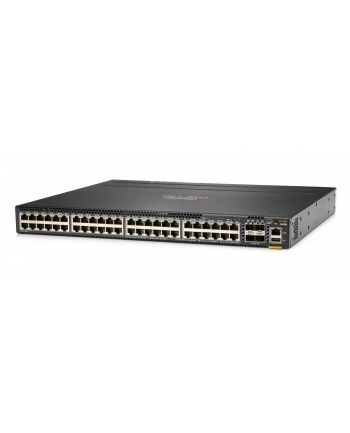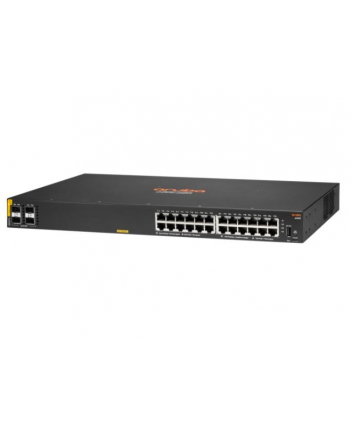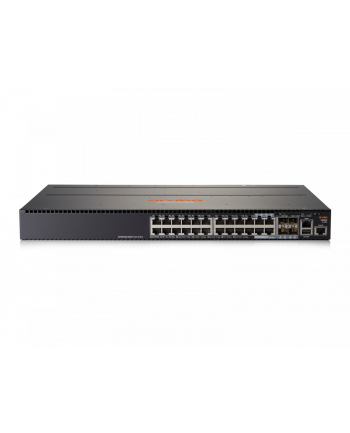Co nas wyróżnia ?
-
Bezpieczne zakupy w 100 %
połączenie HTTPS
szybkie płatności PAYU, BLUE MEDIA
płatności kartą VISA, MASTERCARD
-
Darmowy transport i 14 dni na zwrot!
tysiące produktów z darmowym transportem!
każdy konsument ma 14 dni na rozmyślenie się z zakupu!
-
Fachowa i rzetelna obsługa!
Masz pytania?
Nie szukaj dalej, skontaktuj się lub prześlij zapytanie tutaj.
Co mówią o nas zadowoleni klienci:
hewlett packard enterprise Przełącznik 5140 48G PoE+ 4SFP+ 1-slot HI SW R9L64A

Dane główne

nie stanowią oferty handlowej w rozumieniu przepisów kodeksu cywilnego.
Regulamin
Opis
HPE FlexNetwork 5140 48G PoE+ 4SFP+ HI Switch (R9L64A) I/O ports and slots 48 RJ-45 autosensing 10/100/1000 PoE+ ports (IEEE 802.3 Type 10BASE-T, IEEE 802.3u Type 100BASE-TX, IEEE 802.3ab Type 1000BASE-T, IEEE 802.3at PoE+) 4 SFP+ 10GbE ports 1 port expansion module slot Additional ports and slots 1 dual-personality (RJ-45 or mini-USB) serial console port 1 RJ-45 out-of-band management port 1 USB 2.0 Power supplies 2 power supply slots 1 minimum power supply required Fan tray Airflow direction is from side to back Physical characteristics Dimensions 17.32(w) x 18.11(d) x 1.71(h) in. (44.00 x 46.00 x 4.36 cm) (1U height) Weight ≤9.6 kg Memory and processor 2 GB SDRAM; Packet buffer size: 4 MB, 512 MB flash Mounting and enclosure Mounts in an EIA standard 19-inch telco rack or equipment cabinet (hardwareincluded) Performance 1000 Mb Latency < 5 µs 10 Gbps Latency < 3 µs Throughput 180 Mpps Routing/Switching capacity 336 Gbps Routing table size 8K MAC address table size 32K Environment Operating temperature 23°F to 113°F (-5°C to 45°C) Operating relative humidity 5% to 95%, noncondensing Non-operating/Storage temperature -40°F to 158°F (-40°C to 70°C) Non-operating/Storage relative humidity 5% to 95%, noncondensing Acoustic Low-speed fan: 57.2 dB, High-speed fan: 68.9 dB; ISO 7779 Electrical characteristics Frequency 50/60 Hz Maximum heat dissipation ranges from 112 BTU/hr to 5943 BTU/hr depending on power supply configuration Voltage 100-240 VAC, rated (90-264 VAC, max)-48 to -60 VDC, rated (-36 to -72 VDC, max) (depending on power supply chosen) Maximum power rating 1742 W (dual AC) Idle power 40 W (dual AC) PoE power 1440W (30W max PoE power per port) Notes: - Idle power is the actual power consumption of the device with no ports connected. - Maximum power rating and maximum heat dissipation are the worst-case theoretical maximum numbers provided for planning the infrastructure with fully loaded PoE (if equipped), 100% traffic, all ports plugged in, and all modules populated - PoE+ power range is from 360W to 1440W. PoE+ power is the power supplied by the internal power supplies. It is dependent on the type and quantity of power supplies. Device supports 1 or 2 internal modular power supplies. Safety UL 60950-1; EN 60825-1 Safety of Laser Products-Part 1; EN 60825-2 Safety of Laser Products-Part 2; IEC 60950-1; EN 60950-1; CAN/CSA-C22.2 No. 60950-1; FDA 21 CFR Subchapter J; RoHS Compliance; AS/NZS 60950-1; GB 4943; EAC (EurAsian Conformity Certification) Emissions ETSI EN300 386 V1.6.1 (2012-09); ETSI EN 300 386 V2.1.1 (2016-07); EN 55032:2015 CLASS A; CISPR 32:2015 CLASS A; AS/NZS CISPR 32:2015 CLASS A; EN 61000-3-2:2014; EN 61000-3-3:2013; FCC PART15 Subpart B CLASS A; ICES-003 Issue 7 CLASS A; ANSI C63.4-2014; VCCI-CISPR 32:2016 CLASS A Generic IEC 61000-4-1:2006; IEC 61000-4-2:Ed2 2008; IEC 61000-4-3:2020; IEC 61000-4-3:2010; IEC 61000-4-4:2004; IEC 61000-4-4:2011; IEC 61000-4-4:Ed3.0 2012; IEC 61000-4-5:2014; IEC 61000-4-5:2017; IEC 61000-4-6:2013; IEC 61000-4-6:2013 COR1:2015; IEC 61000-4-8:2009; IEC 61000-4-11:2004; IEC 61000-4-11:2017; IEC 61000-4-11:2020 ESD Air 8KV; Con 6KV; Criteria B Immunity ETSI EN300 386 V1.6.1 (2012-09); ETSI EN 300 386 V2.1.1 (2016-07); EN 55035:2017; CISPR 35:2016; Management IMC-Intelligent Management Center; Smart MC, command-line interface; SNMP Manager Services Refer to the Hewlett Packard Enterprise website at: http://www.hpe.com/networking/services for details on the service-level descriptions and product numbers. For details about services and response times in your area, please contact your local Hewlett Packard Enterprise sales office.
Parametry techniczne
Parametry techniczne produktu
- Opis
-
Seria przełączników HPE FlexNetwork 5140 HI zapewnia wysoką dostępność i skalowalność w warstwie dostępowej średnich i dużych sieci kampusowych przedsiębiorstw.
Przełączniki te zapewniają szybką łączność i elastyczność dzięki łączom nadrzędnym 10GbE i portom combo. Obsługa modułów dodatkowych zwiększa pojemność dzięki dodatkowym funkcjom. Jest to bardzo ekonomiczny przełącznik z licznymi funkcjami, takimi jak DRNI i IRF dla zwiększenia odporności, funkcje QoS dla większej niezawodności, iNQA dla wydajności sieci i wglądu w pojemność w czasie rzeczywistym, sprzętowy MACsec dla kompleksowych szyfrowanych zabezpieczeń, oraz dwa redundantne zasilacze z energooszczędnym Ethernetem dla lepszego oszczędzania energii.
- Klasa przełącznika
- Zarządzalny
- Zastosowanie (switche)
- Średnie i duże firmy (powyżej 16 portów)
- Warstwa przełączania (switche)
-
- L3,
- L2
- Architektura sieci (switche)
- GigabitEthernet
- Liczba portów 10/100/1000 MBps
- 48
- Liczba portów 10GB
- 4
- Liczba portów PoE+
- 48
- Liczba portów SFP+
- 4
- Port konsoli
- Tak
- Przepustowość (switche Gbps)
- 336 Gb/s
- Prędkość przekazywania (Mpps)
- 180 Mpps
- Bufor pakietów
- 4 MB
- Rozmiar tablicy adresów MAC
- 32000
- Obsługa ramek Jumbo
- Tak
- Rozmiar ramki Jumbo
- 8 KB
- Obsługiwane protokoły i standardy
-
- IEEE 802.1ad Q-in-Q
- IEEE 802.1ak Multiple Registration Protocol (MRP) and Multiple VLAN Registration Protocol (MVRP)
- IEEE 802.1AE MACsec
- IEEE 802.1AX2008 Link Aggregation
- IEEE 802.1D MAC Bridges
- IEEE 802.1p Priority
- IEEE 802.1Q (GVRP)
- IEEE 802.1Q VLANs
- IEEE 802.1s Multiple Spanning Trees
- IEEE 802.1v VLAN classification by Protocol and Port
- IEEE 802.1w Rapid Reconfiguration of Spanning Tree
- IEEE 802.1X PAE
- IEEE 802.3 Type 10BASE-T
- IEEE 802.3ab 1000BASE-T
- IEEE 802.3ac (VLAN Tagging Extension)
- IEEE 802.3ad Link Aggregation (LAG)
- IEEE 802.3ad Link Aggregation Control Protocol (LACP)
- IEEE 802.3ae 10-Gigabit Ethernet
- IEEE 802.3af Power over Ethernet
- IEEE 802.3at Power over Ethernet Plus
- IEEE 802.3az Energy Efficient Ethernet
- IEEE 802.3i 10BASE-T
- IEEE 802.3u 100BASE-X
- IEEE 802.3x Flow Control
- IEEE 802.3z 1000BASE-X RFC 768 UDP
- RFC 783 TFTP Protocol (revision 2)
- RFC 791 IP
- RFC 792 ICMP
- RFC 793 TCP
- RFC 826 ARP
- RFC 854 TELNET
- RFC 855 Telnet Option Specification
- RFC 894 IP over Ethernet
- RFC 925 Multi-LAN Address Resolution
- RFC 950 Internet Standard Subnetting Procedure
- RFC 951 BOOTP
- RFC 959 File Transfer Protocol (FTP)
- RFC 1027 Proxy ARP
- RFC 1042 IP Datagrams
- RFC 1058 RIPv1
- RFC 1071 Computing the Internet Checksum
- RFC 1166 IP Addresses
- RFC 1122 Requirements for Internet HostsCommunication Layers
- RFC 1123 Requirements for Internet Hosts
- RFC 1141 Incremental updating of the Internet checksum
- RFC 1191 Path MTU discovery
- RFC 1213 Management Information Base for Network Management of TCP/IP-based internets
- RFC 1256 ICMP Router Discovery Protocol (IRDP)
- RFC 1305 NTPv3
- RFC 1350 TFTP Protocol (revision 2)
- RFC 1519 CIDR
- RFC 1533 DHCP Options and BOOTP Vendor Extensions
- RFC 1542 BOOTP Extensions
- RFC 1591 DNS (client only)
- RFC 1643 Definitions of Managed Objects for the Ethernet-like Interface Types
- RFC 1723 RIP v2
- RFC 1812 IPv4 Routing
- RFC 1866 Hypertext Markup Language2.0
- RFC 1887 An Architecture for IPv6 Unicast Address Allocation
- RFC 1901 Introduction to Community-based SNMPv2
- RFC 1902-1907 SNMPv2
- RFC 2131 DHCP
- RFC 2236 IGMP Snooping
- RFC 2375 IPv6 Multicast Address Assignments
- RFC 2462 IPv6 Stateless Address Autoconfiguration
- RFC 2474 Definition of the Differentiated Services Field (DS Field) in the IPv4 and IPv6 Headers
- RFC 2475 Architecture for Differentiated Services
- RFC 2597 Assured Forwarding PHB Group
- RFC 2616 Hypertext Transfer ProtocolHTTP/1.1
- RFC 2644 Directed Broadcast Control
- RFC 2665 Definitions of Managed Objects for the Ethernet-like Interface Types
- RFC 2668 Definitions of Managed Objects for
- IEEE 802.3 Medium Attachment Units (MAUs)
- RFC 2711 IPv6 Router Alert Option
- RFC 2865 Remote Authentication Dial In User Service (RADIUS)
- RFC 2866 RADIUS Accounting
- RFC 2868 RADIUS Attributes for Tunnel Protocol Support
- RFC 3046 DHCP Relay Agent Information Option
- RFC 3246 Expedited Forwarding PHB
- RFC 3410 Applicability Statements for SNMP
- RFC 3414 User-based Security Model (USM) for version 3 of the Simple Network Management Protocol (SNMPv3)
- RFC 3415 View-based Access Control Model (VACM) for the Simple Network Management Protocol (SNMP)
- RFC 3416 Protocol Operations for SNMP
- RFC 3417 Transport Mappings for the Simple Network Management Protocol (SNMP)
- RFC 3418 Management Information Base (MIB) for the Simple Network Management
- RFC 3484 Default Address Selection for Internet Protocol version 6 (IPv6)
- RFC 3493 Basic Socket Interface Extensions for IPv6
- RFC 3542 Advanced Sockets Application Program Interface (API) for IPv6
- RFC 3576 Ext to RADIUS (CoA only)
- RFC 3580 IEEE 802.1X Remote Authentication Dial In User Service (RADIUS) Usage Guidelines
- RFC 3587 IPv6 Global Unicast Address Format
- RFC 3596 DNS Extensions to Support IP Version 6
- RFC 3704 Unicast Reverse Path Forwarding (URPF)
- RFC 4113 Management Information Base for the User Datagram Protocol (UDP)
- RFC 4213 Basic IPv6 Transition Mechanisms
- RFC 4250 The Secure Shell (SSH) Protocol Assigned Numbers
- RFC 4251 The Secure Shell (SSH) Protocol Architecture
- RFC 4252 The Secure Shell (SSH) Authentication Protocol
- RFC 4253 The Secure Shell (SSH) Transport Layer Protocol
- RFC 4254 The Secure Shell (SSH) Connection Protocol
- RFC 4291 IP Version 6 Addressing Architecture
- RFC 4443 Internet Control Message Protocol (ICMPv6) for the Internet Protocol Version 6 (IPv6) Specification
- RFC 4541 Considerations for Internet Group Management Protocol (IGMP) and Multicast Listener Discovery (MLD)
- Snooping Switches
- RFC 4594 Configuration Guidelines for DiffServ Service Classes
- RFC 4675 RADIUS VLAN & Priority
- QoS
-
- RFC 2474 DS Field in the IPv4 and IPv6 Headers
- RFC 3260 New Terminology and Clarifications for DiffServ
- Bezpieczeństwo
-
- IEEE 802.1X Port Based Network Access Control
- RFC 1492 TACACS+
- RFC 2138 RADIUS Authentication
- RFC 2139 RADIUS Accounting
- RFC 2865 RADIUS Authentication
- RFC 2866 RADIUS Accounting
- RFC 3260 New Terminology and Clarifications for DiffServ
- RFC 4716 SSH Public Key File Format
- Secure Sockets Layer (SSL) SSHv2 Secure Shell
- Zarządzanie, monitorowanie, konfiguracja
-
- Remote configuration and management: Enables configuration and management through a secure CLI located on a remote device
- Manager and operator privilege levels: Provides read-only (operator) and read/write (manager) access on CLI management interfaces
- Command authorization:Leverages RADIUS/HWTACACS to link a custom list of CLI commands to an individual network administrator's login; also provides an audit trail
- Multiple configuration files: Stores easily to the flash image
- Complete session logging: Provides detailed information for problem identification and resolution
- Remote monitoring (RMON): Uses standard SNMP to monitor essential network functions; supports events, alarm, history, and statistics group plus a private alarm extension group
- IEEE 802.1AB Link Layer Discovery Protocol (LLDP): Advertises and receives management information from adjacent devices on a network, facilitating easy mapping by network management applications
- sFlow (RFC 3176): Provides scalable ASIC-based wirespeed network monitoring and accounting with no impact on network performance; this allows network operators to gather a variety of sophisticated network statistics and information for capacity planning and real-time network monitoring purposes
- Management VLAN: Segments traffic to and from management interfaces, including CLI/Telnet and SNMP
- Funkcje L3
-
- Address Resolution Protocol (ARP): Determines the MAC address of another IP host in the same subnet; supports static ARPs; gratuitous ARP allows detection of duplicate IP addresses; proxy ARP allows normal ARP operation between subnets or when subnets are separated by a Layer 2 network
- Dynamic Host Configuration Protocol (DHCP): Simplifies the management of large IP networks; supports client; DHCP Relay enables DHCP operation across subnets
- Loopback interface address: Defines an address that can always be reachable, improving diagnostic capability
- User Datagram Protocol (UDP) helper function: Allows UDP broadcasts to be directed across router interfaces to specific IP unicast or subnet broadcast addresses and prevents server spoofing for UDP services such as DHCP
- Route maps: Provide more control during route redistribution; allow filtering and altering of route metrics
- DHCP server: Centralizes and reduces the cost of IPv4 address management
- Policy Based Routing" Provides a mechanism for indicating and executing forwarding/routing of data packets based on the policies defined by the network administrator
- Typ obudowy
- Rack (Switche/UPS)
- Wentylator (switche)
- Tak
- Zasilacz (switche)
- Wewnętrzny
- Zasilanie
-
100240 VAC, znamionowe (90264 VAC, maks.) -48 do -60 VDC, znamionowe (-36 do -72 VDC, max) (w zależności od wybranego źródła zasilania)
- Wymiary
-
440.0 x 460.0 x 43.6 mm
- Waga
- 9.6 kg
Produkty podobne z kategorii
Produkty podobne producenta
Regulamin









